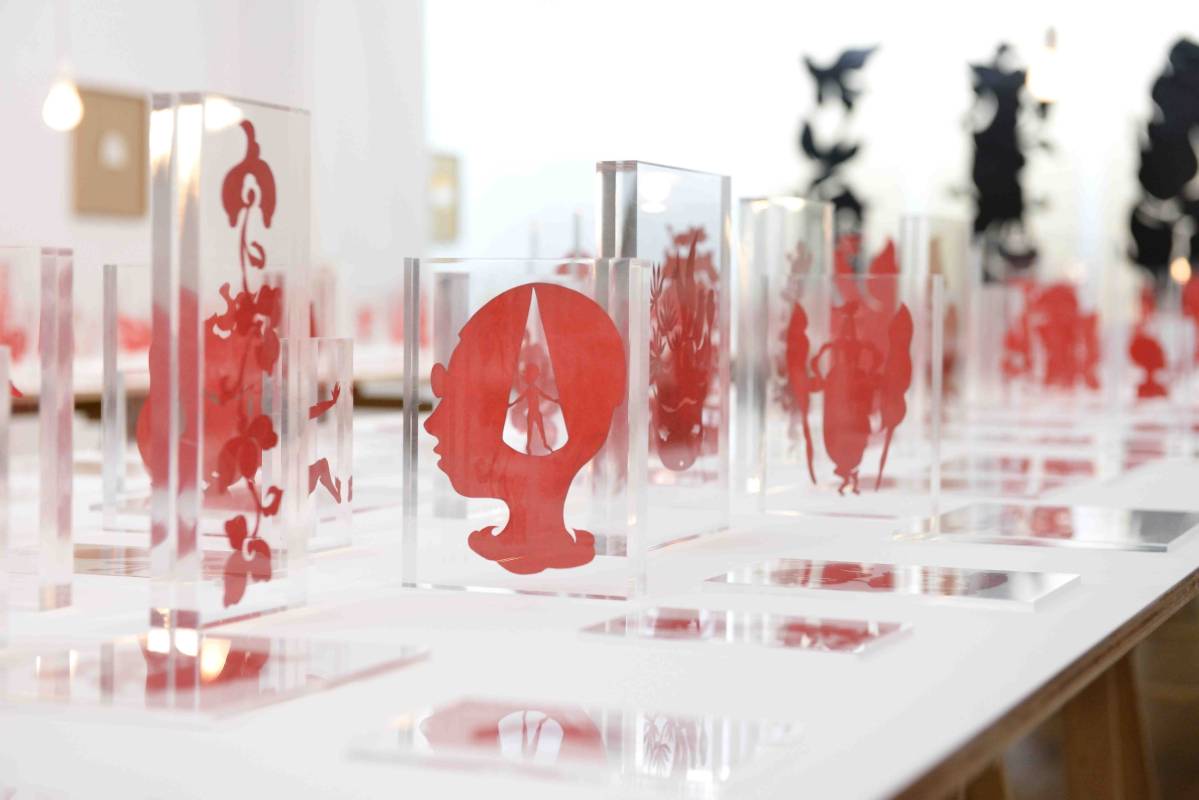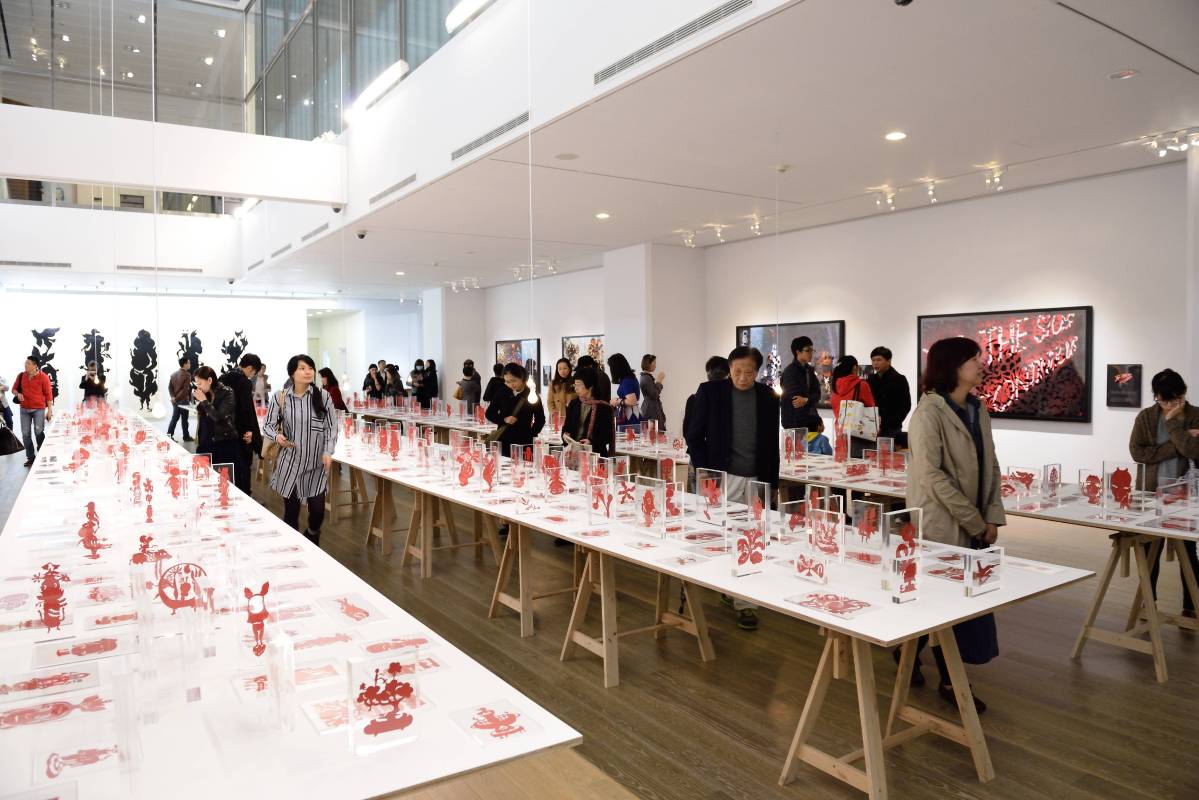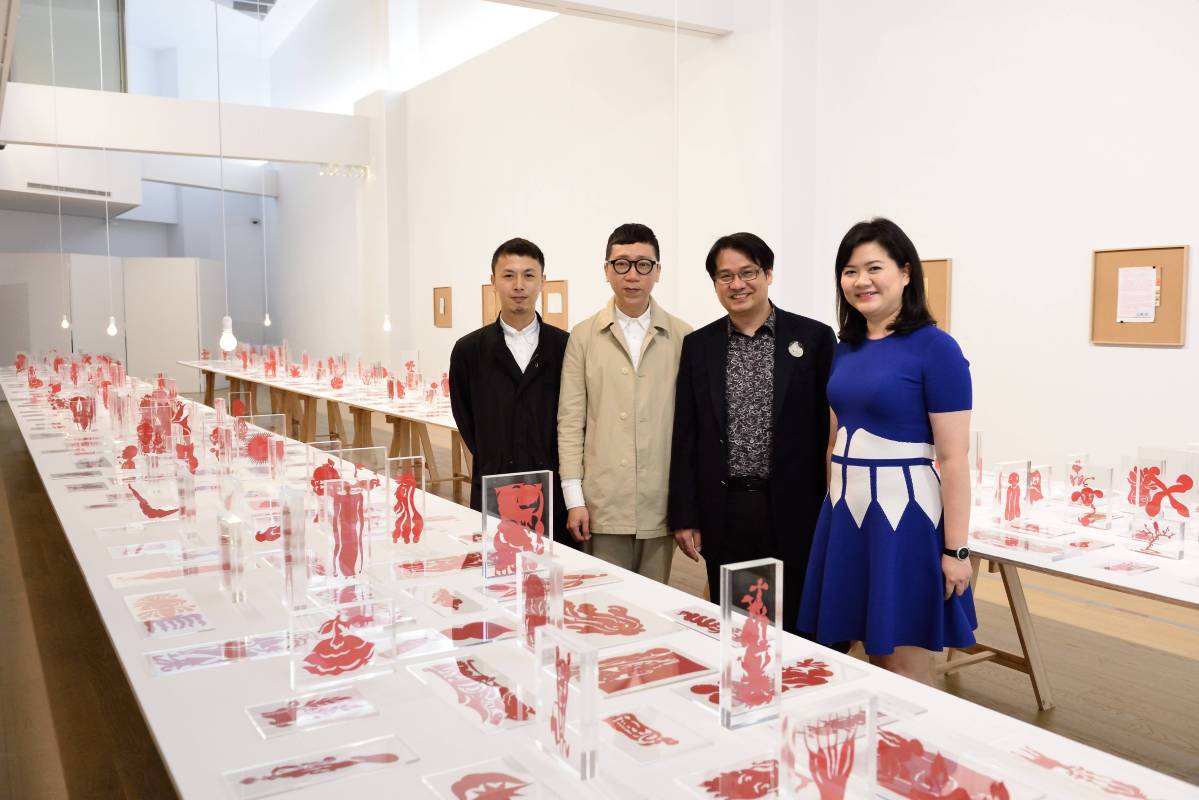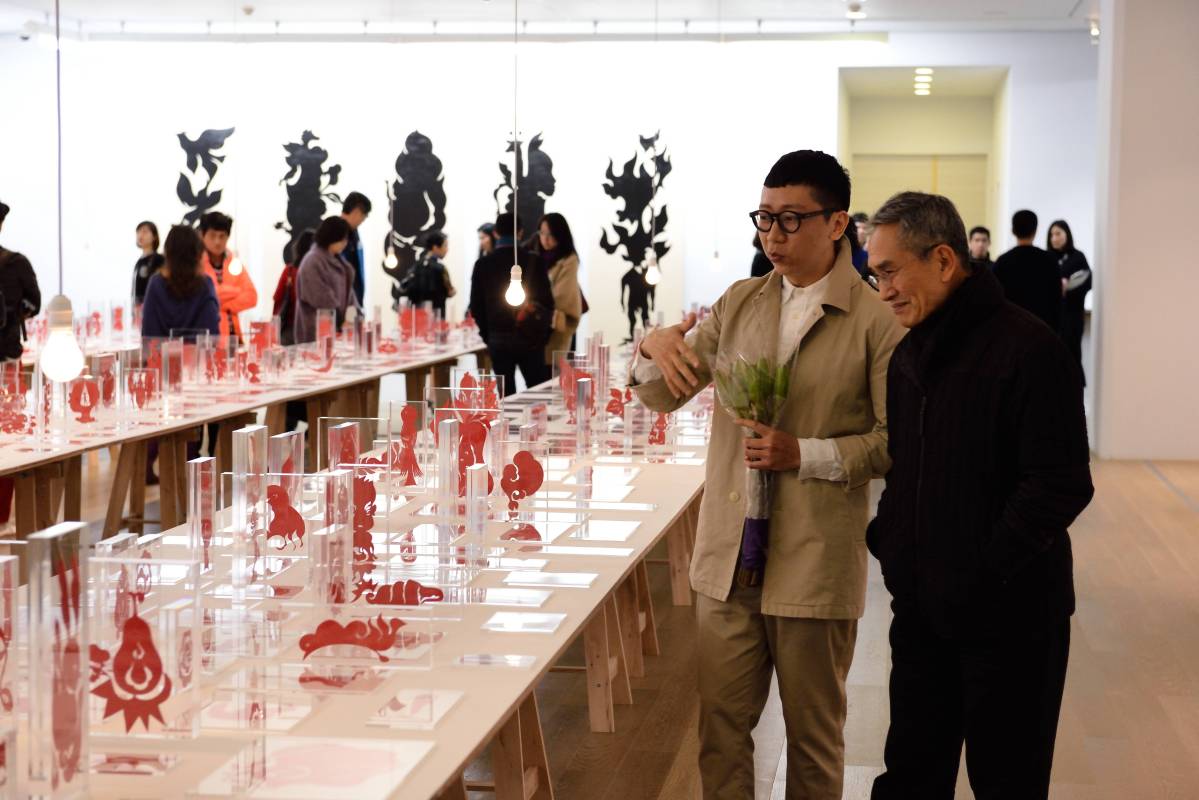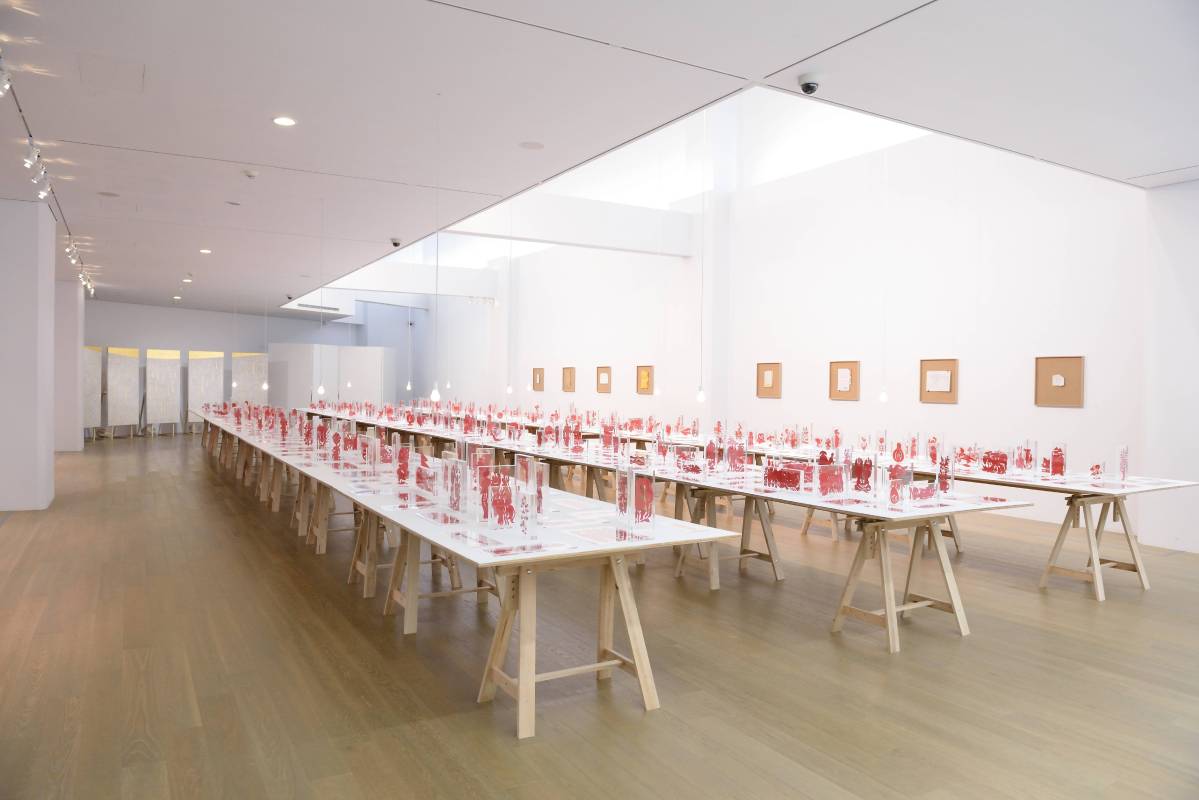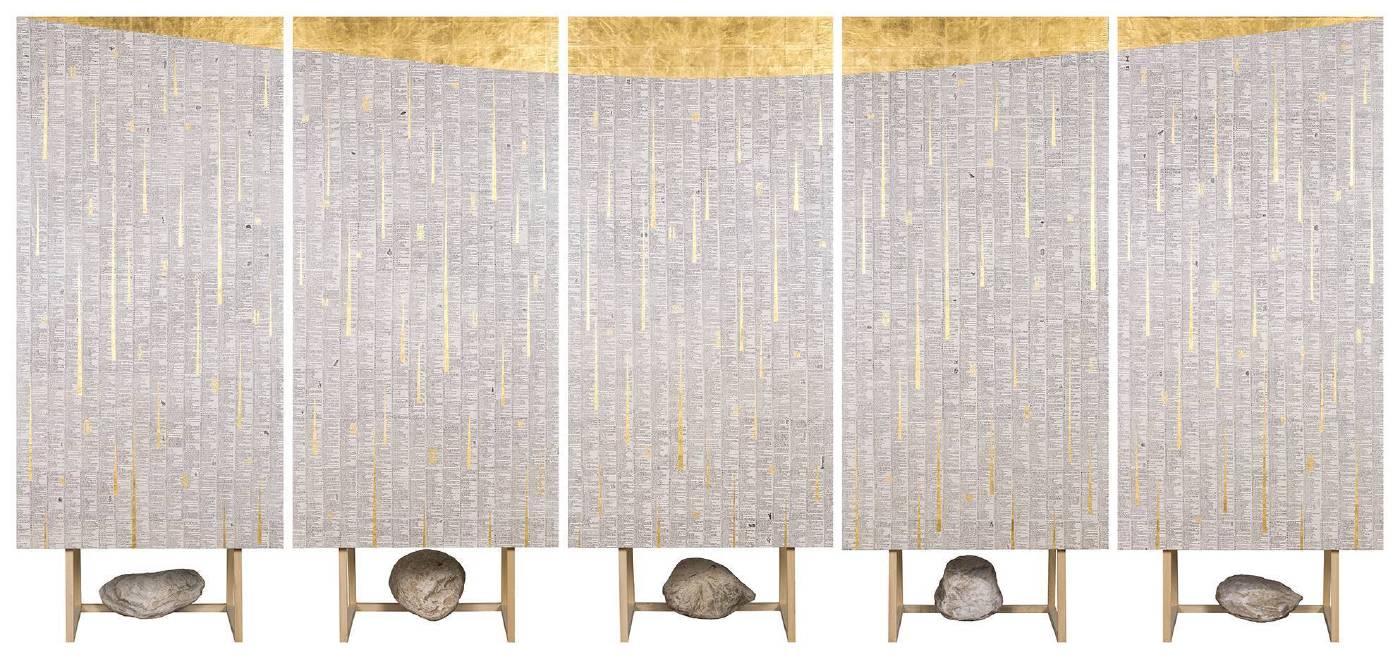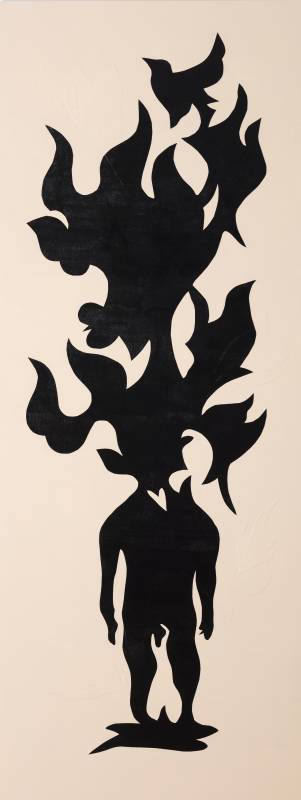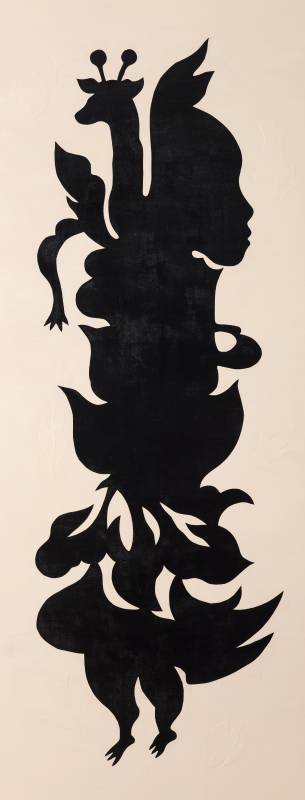尊彩藝術中心
【吳耿禎個展 】一千零一夜九個海一片黃昏
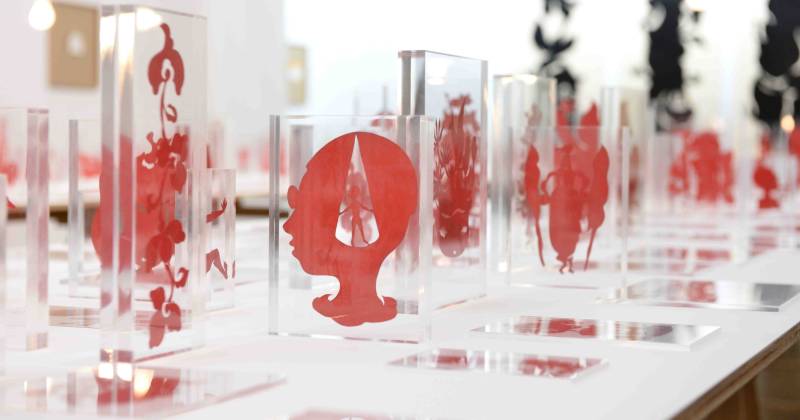
-
展期
日期:2015-04-11 ~ 2015-05-29
-
地點
尊彩藝術中心 台北市內湖區瑞光路366號/開放時間:週二~週日 am11:00~pm6:00
-
參展藝術家
-
“開門見山是剪紙,是夜是海是黃昏。”
“Paper cut-outs is straight for you, it's the night, the sea, and the dusk.”
以剪紙創作聞名,甫與Hermes Petit h合作系列皮革與絲巾作品,而持續受大陸媒體關注的吳耿禎,將於尊彩藝術中心呈現吳耿禎個展「一千零一夜九個海一片黃昏」, 展期為4月11日(六)至5月29日(五),開幕茶會於4月11日(六)晚上六點舉行,邀請您一同探索現代剪紙藝術之奧祕。
從建築空間,劇場合作,剪紙,甚至是近期較多計畫式的創作來看,吳耿禎此次個展試圖在畫廊空間進行「剪紙」脈絡的延展性,這項具有民間文化代表性的載體(剪紙)被以現當代思維作為一個藝術家表現形式,特別是剪紙文化的大中國(某東方)象徵,在台灣的創作者身上顯現某種酷異與呼應的雙重性,「繼承血緣」與「抗拒身分」的同時並存。像是某顆種籽的異地著陸生長。
「一千零一夜」計畫,吳耿禎試圖以他熱愛慢跑的節奏去規範自己的創作數量,集合式的呈現創作者日常生活的精神狀態,一張剪紙透過郵寄,交遞於一位(吳耿禎邀請的)參與者手上,參與者收到剪紙後,必須樂意(或被迫)生產一段文字,作為交換,去回應這個「禮物?」。於是我們像是看到一部普魯斯特的大量文字消耗的圖像堆疊,以藝術生產抵消藝術生產,以時間交換時間。作者說「希望整件作品最後只剩下文字」,是否這樣的生產交換能夠轉譯我們從「觀看圖像」成為「文字閱讀」的想像可能?而這項以「剪紙交換文字」的計畫尚在進行中,也讓人好奇整件作品完結的最終面貌。
吳耿禎曾於2010年獲得Louis Vuitton 「Journey In My Mind」藝術首獎,是首位於LV Cultural Space舉辦個展的台灣藝術家。建築設計畢業的他擅長將不同媒材呈現於空間,「影像剪紙系列 – 夜」延續以「影像」作為剪紙媒材,影像內容是創作者在四個不同國家駐村或旅行所拍攝,當「攝影」x「剪紙」,帶領觀者進入影像的空洞與殘缺,閱讀( )剪去 的空間。「一片黃昏 – 中文繁體字典」藉由拆解老字典,以鉛印紙張作為剪紙素材,表達對「紙書本與繁體字」逐漸消逝的關懷,重溫童年學習文字的古典記憶。
“Along with Night Sky, Ocean, and Dusk, Paper-cut Awaits Right Before Your Eyes.”
The artist Jam Wu is not only known for his paper cutting but also the recent collaboration with Hermès Petit h, with which he has designed a series of leather works and silk scarves as being closely followed by the media of China. Now, Wu’s solo exhibition One Thousand And One Nights / Nine Sea / An Evening will be held between 11 April, 2015 (Sat) and 29 May, 2015 (Fri) at Liang Gallery. The opening reception will begin at 6 pm on 11 April, 2015. We sincerely welcome you to this mysterious world of modern paper cutting.
This solo exhibition of Jam Wu is an attempt to reach for further possibilities with his well-known paper-cut series. Compared with his recent projects which focus on art and social connections, this exhibition seems to have expunged paper-cutting’s notable quality as a medium and has shifted into contextual developments based on words. However, how can paper-cut, a medium of mundane, popular quality, break from its regional symbolism? At the same time, how to convert traditional culture’s mundane quality into contemporary ideas and to use them to interpret our current society and individual conditions? The process of cultural inheritance and repeated evaluations of modernity seems to be filled with echoing noises, and this is something frequently observed in Wu’s previous creative endeavors. The metonymy embodied in One Thousand and One Nights presents a more adamant tone of voice, with the aforementioned issues responded. The sounds acquired from dialogues between the participants and the paper-cut images are used to offer a new way of seeing contemporary society – a way to see individuals, to see society, and to see the act of “seeing”.
The project of One Thousand and One Nights is created with a creative frequency that mimics Wu’s preferred slow jogging pace. It is an attempt to take that long, extensive, yet unspeakable cluster he has encountered during the creative process and to substantialize it into a thickness that is massive and composed of multiple layers, resulting in a display format similar to a check-list and containing the psychological states experienced in his life while making art. The project began with mailing out various paper-cut artworks to the project participants. The participants had already agreed (or were forced to agree) after receiving the paper-cut to provide a piece of writing in exchange for the “gift”. Following the deliveries, words began to pour in and began to form a Marcel Proust-like novel. The intensive influx of words also indicates that compilations of images are also being consumed, with perceptual productions negating rational productions, as paper-cuts are exchanged for words. Through this instructive creative endeavor involving the act of exchange, the artist’s intent is “for words to be the only remainder of the entire artwork.” Could it be possible for this kind of production exchange to transcribe visual viewing into textural reading?
Although a thousand and one pieces of paper-cuts could be storied away without much difficulty, however, as a singular artwork, the artist’s ambition for paper-cutting is showcased in this project; furthermore, it also imposes a challenge in the gallery system for its marketing and collecting prospects. This project of “exchanging paper-cuts for words” is still on-going, and it will be interesting to see what will remain in the end and also see Wu’s transformation.
Jam Wu has won the First Prize of Louis Vuitton’s Journey In My Mind in 2010. Graduating with an architectural design degree, Wu is particularly talented for his arrangement of various materials around the whole space. “Photo-cutting Collection – Night” follows Wu’s previous practice to adopt “photos” as the materials for paper cutting. The photos were taken during the artist’s trips or residence in four different countries. The photo-cutting works invite viewers to savor the void and the incompleteness of images and to study the space being cut out. As for “An Evening – Dictionary of Traditional Chinese,” the artist deconstructs an old dictionary, using letterpress printing as his materials to express his sentiments about the gradual death of “paper books and traditional Chinese” as the nostalgia for the childhood when one learns to read.
推薦藝術家
view all推薦展覽
view all尊彩藝術中心
【生命的稜線——劉得浪山行個展】Ridgelines of Life —— LIU De-Lang Solo Exhibition
日期:2024-12-15 ~ 2025-02-28|台灣,台北市
